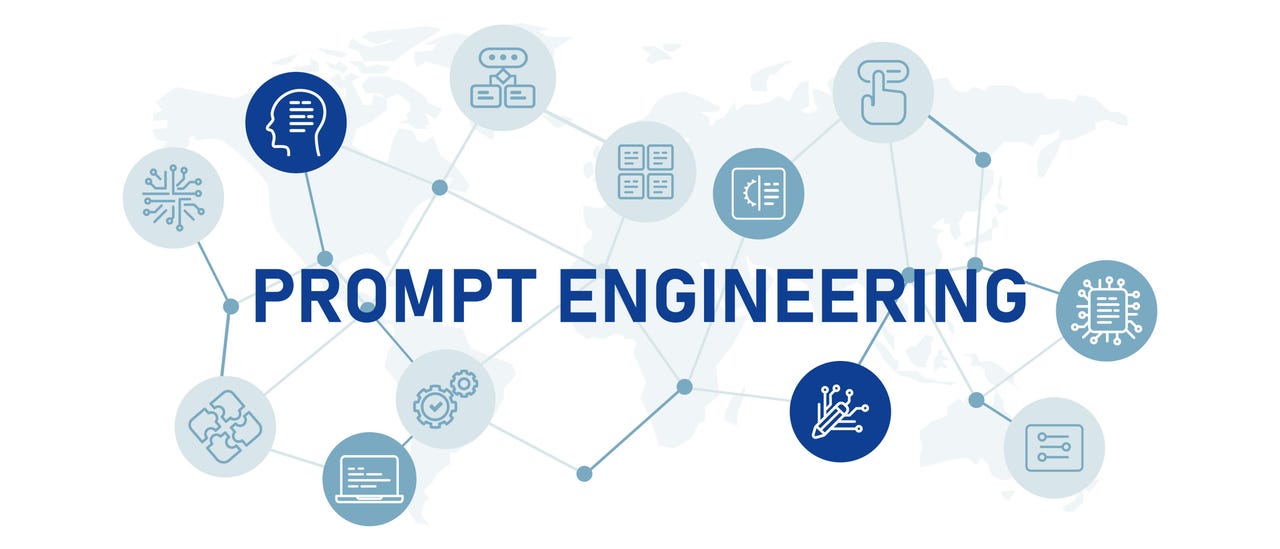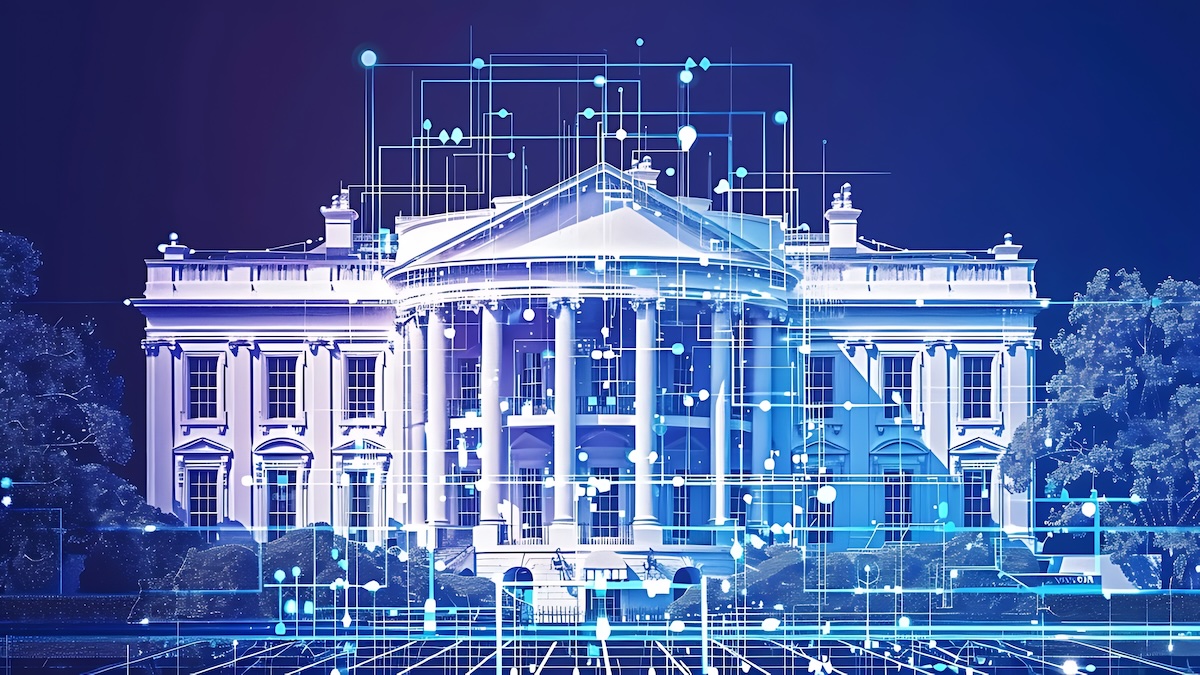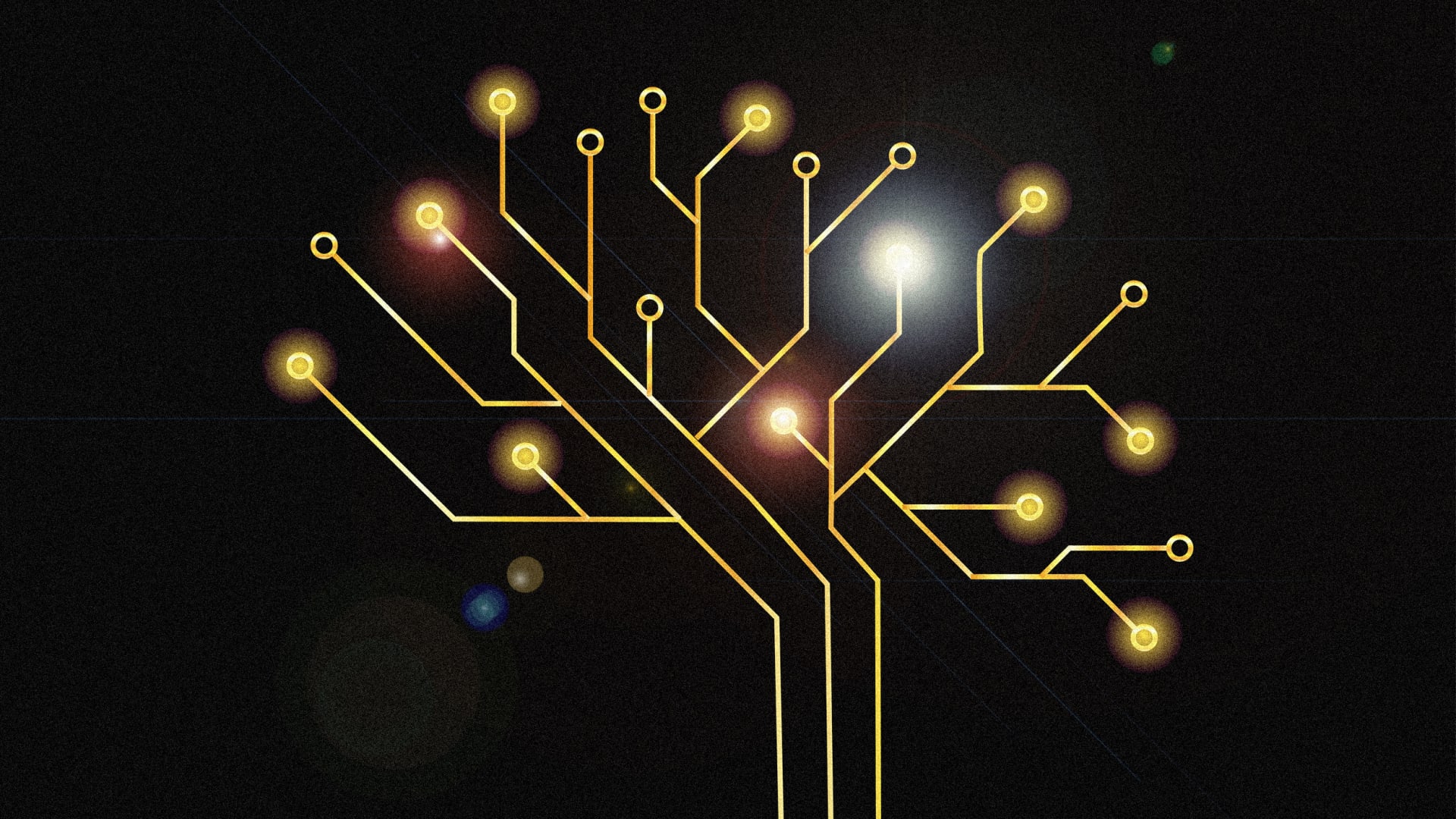Quote for the day:
"Next generation leaders are those who would rather challenge what needs to change and pay the price than remain silent and die on the inside." -- Andy Stanley
The intersection of identity security and data privacy laws for a safe digital space
 The integration of identity security with data privacy has become essential for
corporations, governing bodies, and policymakers. Compliance regulations are set
by frameworks such as the Digital Personal Data Protection (DPDP) Bill and the
CERT-In directives – but encryption and access control alone are no longer
enough. AI-driven identity security tools flag access combinations before they
become gateways to fraud, monitor behavior anomalies in real-time, and offer
deep, contextual visibility into both human and machine identities. All these
factors combined bring about compliance-free, trust-building resilient security:
proactive security that is self-adjusting, overcoming various challenges
encountered today. By aligning intelligent identity security tools with privacy
regulations, organisations gain more than just protection—they earn credibility.
... The DPDP Act tracks closely to global benchmarks such as GDPR and data
protection regulations in Singapore and Australia which mandate organisations to
implement appropriate security measures to protect personal data and amp up
response to data breaches. They also assert that organisations that embrace and
prioritise data privacy and identity security stand to gain the optimum level of
reduced risk and enhanced trust from customers, partners and regulators.
The integration of identity security with data privacy has become essential for
corporations, governing bodies, and policymakers. Compliance regulations are set
by frameworks such as the Digital Personal Data Protection (DPDP) Bill and the
CERT-In directives – but encryption and access control alone are no longer
enough. AI-driven identity security tools flag access combinations before they
become gateways to fraud, monitor behavior anomalies in real-time, and offer
deep, contextual visibility into both human and machine identities. All these
factors combined bring about compliance-free, trust-building resilient security:
proactive security that is self-adjusting, overcoming various challenges
encountered today. By aligning intelligent identity security tools with privacy
regulations, organisations gain more than just protection—they earn credibility.
... The DPDP Act tracks closely to global benchmarks such as GDPR and data
protection regulations in Singapore and Australia which mandate organisations to
implement appropriate security measures to protect personal data and amp up
response to data breaches. They also assert that organisations that embrace and
prioritise data privacy and identity security stand to gain the optimum level of
reduced risk and enhanced trust from customers, partners and regulators.Who needs real things when everything can be a hologram?
 Meta founder and CEO Mark Zuckerberg said recently on Theo Von’s “This Past
Weekend” podcast that everything is shifting to holograms. A hologram is a
three-dimensional image that represents an object in a way that allows it to be
viewed from different angles, creating the illusion of depth. Zuckerberg
predicts that most of our physical objects will become obsolete and replaced by
holographic versions seen through augmented reality (AR) glasses. The
conversation floated the idea that books, board games, ping-pong tables, and
even smartphones could all be virtualized, replacing the physical, real-world
versions. Zuckerberg also expects that somewhere between one and two billion
people could replace their smartphones with AR glasses within four years. One
potential problem with that prediction: the public has to want to replace
physical objects with holographic versions. So far, Apple’s experience with
Apple Vision Pro does not imply that the public is clamoring for holographic
replacements. ... I have no doubt that holograms will increasingly become
ubiquitous in our lives. But I doubt that a majority will ever prefer a
holographic virtual book over a physical book or even a physical e-book reader.
The same goes for other objects in our lives. I also suspect both
Zuckerberg’s motives and his predictive powers.
Meta founder and CEO Mark Zuckerberg said recently on Theo Von’s “This Past
Weekend” podcast that everything is shifting to holograms. A hologram is a
three-dimensional image that represents an object in a way that allows it to be
viewed from different angles, creating the illusion of depth. Zuckerberg
predicts that most of our physical objects will become obsolete and replaced by
holographic versions seen through augmented reality (AR) glasses. The
conversation floated the idea that books, board games, ping-pong tables, and
even smartphones could all be virtualized, replacing the physical, real-world
versions. Zuckerberg also expects that somewhere between one and two billion
people could replace their smartphones with AR glasses within four years. One
potential problem with that prediction: the public has to want to replace
physical objects with holographic versions. So far, Apple’s experience with
Apple Vision Pro does not imply that the public is clamoring for holographic
replacements. ... I have no doubt that holograms will increasingly become
ubiquitous in our lives. But I doubt that a majority will ever prefer a
holographic virtual book over a physical book or even a physical e-book reader.
The same goes for other objects in our lives. I also suspect both
Zuckerberg’s motives and his predictive powers. How AI Is Rewriting the CIO’s Workforce Strategy
 With the mystique fading, enterprises are replacing large prompt-engineering
teams with AI platform engineers, MLOps architects, and cross-trained analysts.
A prompt engineer in 2023 often becomes a context architect by 2025; data
scientists evolve into AI integrators; business-intelligence analysts transition
into AI interaction designers; and DevOps engineers step up as MLOps platform
leads. The cultural shift matters as much as the job titles. AI work is no
longer about one-off magic, it is about building reliable infrastructure. CIOs
generally face three choices. One is to spend on systems that make prompts
reproducible and maintainable, such as RAG pipelines or proprietary context
platforms. Another is to cut excessive spending on niche roles now being
absorbed by automation. The third is to reskill internal talent, transforming
today’s prompt writers into tomorrow’s systems thinkers who understand context
flows, memory management, and AI security. A skilled prompt engineer today can
become an exceptional context architect tomorrow, provided the organization
invests in training. ... Prompt engineering isn’t dead, but its peak as a
standalone role may already be behind us. The smartest organizations are
shifting to systems that abstract prompt complexity and scale their AI
capability without becoming dependent on a single human’s creativity.
With the mystique fading, enterprises are replacing large prompt-engineering
teams with AI platform engineers, MLOps architects, and cross-trained analysts.
A prompt engineer in 2023 often becomes a context architect by 2025; data
scientists evolve into AI integrators; business-intelligence analysts transition
into AI interaction designers; and DevOps engineers step up as MLOps platform
leads. The cultural shift matters as much as the job titles. AI work is no
longer about one-off magic, it is about building reliable infrastructure. CIOs
generally face three choices. One is to spend on systems that make prompts
reproducible and maintainable, such as RAG pipelines or proprietary context
platforms. Another is to cut excessive spending on niche roles now being
absorbed by automation. The third is to reskill internal talent, transforming
today’s prompt writers into tomorrow’s systems thinkers who understand context
flows, memory management, and AI security. A skilled prompt engineer today can
become an exceptional context architect tomorrow, provided the organization
invests in training. ... Prompt engineering isn’t dead, but its peak as a
standalone role may already be behind us. The smartest organizations are
shifting to systems that abstract prompt complexity and scale their AI
capability without becoming dependent on a single human’s creativity.Biometric privacy on trial: The constitutional stakes in United States v. Brown
 The divergence between the two federal circuit courts has created a classic
“circuit split,” a situation that almost inevitably calls for resolution by the
U.S. Supreme Court. Legal scholars point out that this split could not be more
consequential, as it directly affects how courts across the country treat
compelled access to devices that contain vast troves of personal, private, and
potentially incriminating information. What’s at stake in the Brown decision
goes far beyond criminal law. In the digital age, smartphones are extensions of
the self, containing everything from personal messages and photos to financial
records, location data, and even health information. Unlocking one’s device may
reveal more than a house search could have in the 18th century, and the very
kind of search the Bill of Rights was designed to restrict. If the D.C.
Circuit’s reasoning prevails, biometric security methods like Apple’s Face ID,
Samsung’s iris scans, and various fingerprint unlock systems could receive
constitutional protection when used to lock private data. That, in turn, could
significantly limit law enforcement’s ability to compel access to devices
without a warrant or consent. Moreover, such a ruling would align biometric
authentication with established protections for passcodes.
The divergence between the two federal circuit courts has created a classic
“circuit split,” a situation that almost inevitably calls for resolution by the
U.S. Supreme Court. Legal scholars point out that this split could not be more
consequential, as it directly affects how courts across the country treat
compelled access to devices that contain vast troves of personal, private, and
potentially incriminating information. What’s at stake in the Brown decision
goes far beyond criminal law. In the digital age, smartphones are extensions of
the self, containing everything from personal messages and photos to financial
records, location data, and even health information. Unlocking one’s device may
reveal more than a house search could have in the 18th century, and the very
kind of search the Bill of Rights was designed to restrict. If the D.C.
Circuit’s reasoning prevails, biometric security methods like Apple’s Face ID,
Samsung’s iris scans, and various fingerprint unlock systems could receive
constitutional protection when used to lock private data. That, in turn, could
significantly limit law enforcement’s ability to compel access to devices
without a warrant or consent. Moreover, such a ruling would align biometric
authentication with established protections for passcodes. GenAI controls and ZTNA architecture set SSE vendors apart
 “[SSE] provides a range of security capabilities, including adaptive access
based on identity and context, malware protection, data security, and threat
prevention, as well as the associated analytics and visibility,” Gartner writes.
“It enables more direct connectivity for hybrid users by reducing latency and
providing the potential for improved user experience.” Must-haves include
advanced data protection capabilities – such as unified data leak protection
(DLP), content-aware encryption, and label-based controls – that enable
enterprises to enforce consistent data security policies across web, cloud, and
private applications. Securing Software-as-a-Service (SaaS) applications is
another important area, according to Gartner. SaaS security posture management
(SSPM) and deep API integrations provide real-time visibility into SaaS app
usage, configurations, and user behaviors, which Gartner says can help security
teams remediate risks before they become incidents. Gartner defines SSPM as a
category of tools that continuously assess and manage the security posture of
SaaS apps. ... Other necessary capabilities for a complete SSE solution include
digital experience monitoring (DEM) and AI-driven automation and coaching,
according to Gartner.
“[SSE] provides a range of security capabilities, including adaptive access
based on identity and context, malware protection, data security, and threat
prevention, as well as the associated analytics and visibility,” Gartner writes.
“It enables more direct connectivity for hybrid users by reducing latency and
providing the potential for improved user experience.” Must-haves include
advanced data protection capabilities – such as unified data leak protection
(DLP), content-aware encryption, and label-based controls – that enable
enterprises to enforce consistent data security policies across web, cloud, and
private applications. Securing Software-as-a-Service (SaaS) applications is
another important area, according to Gartner. SaaS security posture management
(SSPM) and deep API integrations provide real-time visibility into SaaS app
usage, configurations, and user behaviors, which Gartner says can help security
teams remediate risks before they become incidents. Gartner defines SSPM as a
category of tools that continuously assess and manage the security posture of
SaaS apps. ... Other necessary capabilities for a complete SSE solution include
digital experience monitoring (DEM) and AI-driven automation and coaching,
according to Gartner. 5 Risk Management Lessons OT Cybersecurity Leaders Can’t Afford to Ignore
A weak or shared passwords, outdated software, and misconfigured networks are consistently leveraged by malicious actors. Seemingly minor oversights can create significant gaps in an organization’s defenses, allowing attackers to gain unauthorized access and cause havoc. When the basics break down, particularly in converged IT/OT environments where attackers only need one foothold, consequences escalate fast. ... One common misconception in critical infrastructure is that OT systems are safe unless directly targeted. However, the reality is far more nuanced. Many incidents impacting OT environments originate as seemingly innocuous IT intrusions. Attackers enter through an overlooked endpoint or compromised credential in the enterprise network and then move laterally into the OT environment through weak segmentation or misconfigured gateways. This pattern has repeatedly emerged in the pipeline sector. ... Time and again, post-mortems reveal the same pattern: organizations lacking in tested procedures, clear roles, or real-world readiness. A proactive posture begins with rigorous risk assessments, threat modeling, and vulnerability scanning—not once, but as a cycle that evolves with the threat landscape. This plan should outline clear procedures for detecting, containing, and recovering from cyber incidents.You Can Build Authentication In-House, But Should You?
 Auth isn’t a static feature. It evolves — layer by layer — as your product
grows, your user base diversifies, and enterprise customers introduce new
requirements. Over time, the simple system you started with is forced to stretch
well beyond its original architecture. Every engineering team that builds auth
internally will encounter key inflection points — moments when the complexity,
security risk, and maintenance burden begin to outweigh the benefits of control.
... Once you’re selling into larger businesses, SSO becomes a hard requirement
for enterprises. Customers want to integrate with their own identity providers
like Okta, Microsoft Entra, or Google Workspace using protocols like SAML or
OIDC. Implementing these protocols is non-trivial, especially when each customer
has their own quirks and expectations around onboarding, metadata exchange, and
user mapping. ... Once SSO is in place, the following enterprise requirement is
often SCIM (System for Cross-domain Identity Management). SCIM, also known as
Directory Sync, enables organizations to provision automatically and deprovision
user accounts through their identity provider. Supporting it properly means
syncing state between your system and theirs and handling partial failures
gracefully. ... The newest wave of complexity in modern authentication comes
from AI agents and LLM-powered applications.
Auth isn’t a static feature. It evolves — layer by layer — as your product
grows, your user base diversifies, and enterprise customers introduce new
requirements. Over time, the simple system you started with is forced to stretch
well beyond its original architecture. Every engineering team that builds auth
internally will encounter key inflection points — moments when the complexity,
security risk, and maintenance burden begin to outweigh the benefits of control.
... Once you’re selling into larger businesses, SSO becomes a hard requirement
for enterprises. Customers want to integrate with their own identity providers
like Okta, Microsoft Entra, or Google Workspace using protocols like SAML or
OIDC. Implementing these protocols is non-trivial, especially when each customer
has their own quirks and expectations around onboarding, metadata exchange, and
user mapping. ... Once SSO is in place, the following enterprise requirement is
often SCIM (System for Cross-domain Identity Management). SCIM, also known as
Directory Sync, enables organizations to provision automatically and deprovision
user accounts through their identity provider. Supporting it properly means
syncing state between your system and theirs and handling partial failures
gracefully. ... The newest wave of complexity in modern authentication comes
from AI agents and LLM-powered applications.
Developer Joy: A Better Way to Boost Developer Productivity
/articles/developer-joy-productivity/en/smallimage/developer-joy-productivity-thumbnail-1748854717017.jpg) Play isn’t just fluff; it’s a tool. Whether it’s trying something new in a
codebase, hacking together a prototype, or taking a break to let the brain
wander, joy helps developers learn faster, solve problems more creatively, and
stay engaged. ... Aim to reduce friction and toil, the little frustrations that
break momentum and make work feel like a slog. Long build and test times are
common culprits. At Gradle, the team is particularly interested in improving the
reliability of tests by giving developers the right tools to understand
intermittent failures. ... When we’re stuck on a problem, we’ll often bang
our head against the code until midnight, without getting anywhere. Then in the
morning, suddenly it takes five minutes for the solution to click into place. A
good night’s sleep is the best debugging tool, but why? What happens? This is
the default mode network at work. The default mode network is a set of
connections in your brain that activates when you’re truly idle. This network is
responsible for many vital brain functions, including creativity and complex
problem-solving. Instead of filling every spare moment with busywork, take
proper breaks. Go for a walk. Knit. Garden. "Dead time" in these examples isn't
slacking, it’s deep problem-solving in disguise.
Play isn’t just fluff; it’s a tool. Whether it’s trying something new in a
codebase, hacking together a prototype, or taking a break to let the brain
wander, joy helps developers learn faster, solve problems more creatively, and
stay engaged. ... Aim to reduce friction and toil, the little frustrations that
break momentum and make work feel like a slog. Long build and test times are
common culprits. At Gradle, the team is particularly interested in improving the
reliability of tests by giving developers the right tools to understand
intermittent failures. ... When we’re stuck on a problem, we’ll often bang
our head against the code until midnight, without getting anywhere. Then in the
morning, suddenly it takes five minutes for the solution to click into place. A
good night’s sleep is the best debugging tool, but why? What happens? This is
the default mode network at work. The default mode network is a set of
connections in your brain that activates when you’re truly idle. This network is
responsible for many vital brain functions, including creativity and complex
problem-solving. Instead of filling every spare moment with busywork, take
proper breaks. Go for a walk. Knit. Garden. "Dead time" in these examples isn't
slacking, it’s deep problem-solving in disguise.
Get out of the audit committee: Why CISOs need dedicated board time
 The problem is the limited time allocated to CISOs in audit committee meetings
is not sufficient for comprehensive cybersecurity discussions. Increasingly,
more time is needed for conversations around managing the complex risk
landscape. In previous CISO roles, Gerchow had a similar cadence, with quarterly
time with the security committee and quarterly time with the board. He also had
closed door sessions with only board members. “Anyone who’s an employee of the
company, even the CEO, has to drop off the call or leave the room, so it’s just
you with the board or the director of the board,” he tells CSO. He found these
particularly important for enabling frank conversations, which might centre on
budget, roadblocks to new security implementations or whether he and his team
are getting enough time to implement security programs. “They may ask: ‘How are
things really going? Are you getting the support you need?’ It’s a transparent
conversation without the other executives of the company being present.” ... In
previous CISO roles, Gerchow had a similar cadence, with quarterly time with the
security committee and quarterly time with the board. He also had closed door
sessions with only board members. “Anyone who’s an employee of the company, even
the CEO, has to drop off the call or leave the room, so it’s just you with the
board or the director of the board,” he tells CSO.
The problem is the limited time allocated to CISOs in audit committee meetings
is not sufficient for comprehensive cybersecurity discussions. Increasingly,
more time is needed for conversations around managing the complex risk
landscape. In previous CISO roles, Gerchow had a similar cadence, with quarterly
time with the security committee and quarterly time with the board. He also had
closed door sessions with only board members. “Anyone who’s an employee of the
company, even the CEO, has to drop off the call or leave the room, so it’s just
you with the board or the director of the board,” he tells CSO. He found these
particularly important for enabling frank conversations, which might centre on
budget, roadblocks to new security implementations or whether he and his team
are getting enough time to implement security programs. “They may ask: ‘How are
things really going? Are you getting the support you need?’ It’s a transparent
conversation without the other executives of the company being present.” ... In
previous CISO roles, Gerchow had a similar cadence, with quarterly time with the
security committee and quarterly time with the board. He also had closed door
sessions with only board members. “Anyone who’s an employee of the company, even
the CEO, has to drop off the call or leave the room, so it’s just you with the
board or the director of the board,” he tells CSO.





































